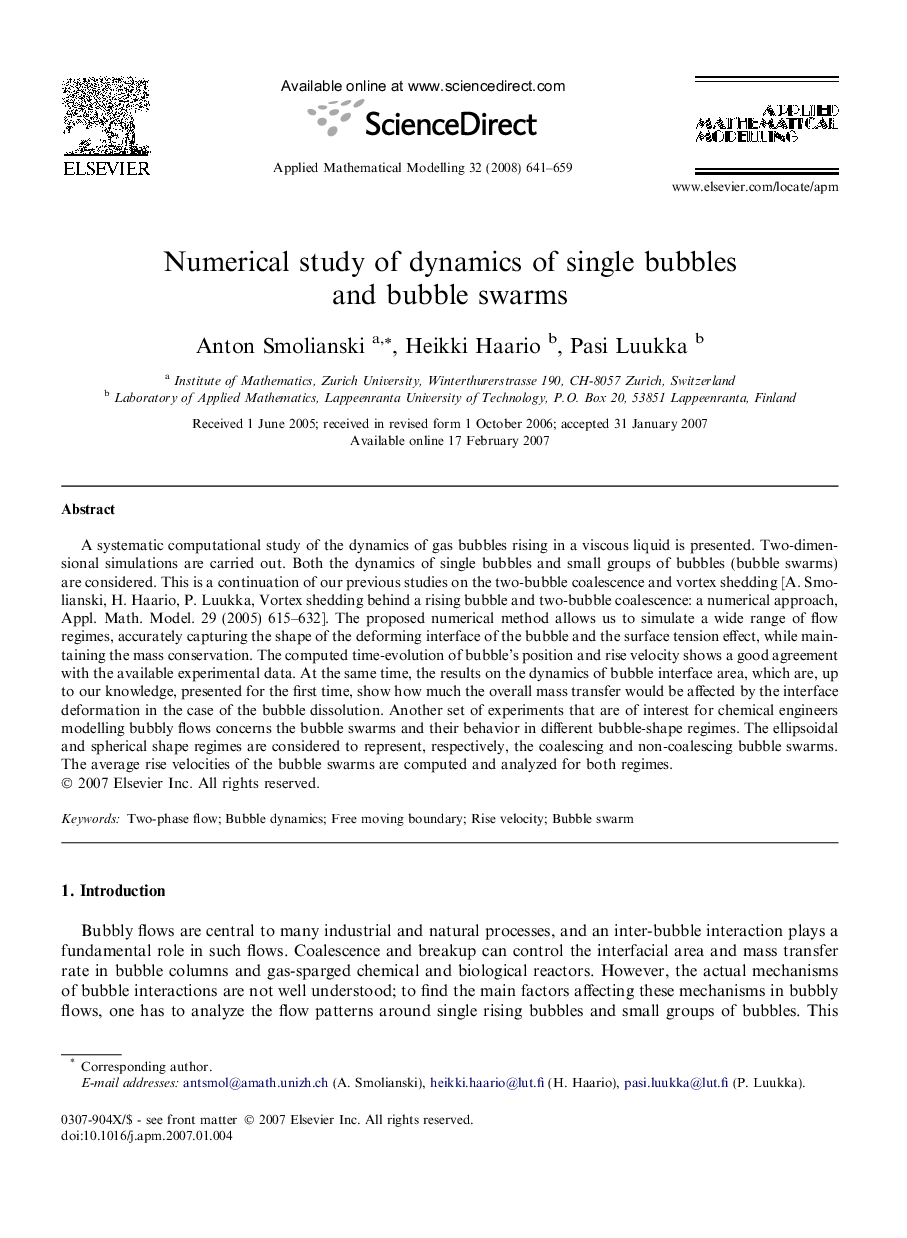| Article ID | Journal | Published Year | Pages | File Type |
|---|---|---|---|---|
| 1705957 | Applied Mathematical Modelling | 2008 | 19 Pages |
A systematic computational study of the dynamics of gas bubbles rising in a viscous liquid is presented. Two-dimensional simulations are carried out. Both the dynamics of single bubbles and small groups of bubbles (bubble swarms) are considered. This is a continuation of our previous studies on the two-bubble coalescence and vortex shedding [A. Smolianski, H. Haario, P. Luukka, Vortex shedding behind a rising bubble and two-bubble coalescence: a numerical approach, Appl. Math. Model. 29 (2005) 615–632]. The proposed numerical method allows us to simulate a wide range of flow regimes, accurately capturing the shape of the deforming interface of the bubble and the surface tension effect, while maintaining the mass conservation. The computed time-evolution of bubble’s position and rise velocity shows a good agreement with the available experimental data. At the same time, the results on the dynamics of bubble interface area, which are, up to our knowledge, presented for the first time, show how much the overall mass transfer would be affected by the interface deformation in the case of the bubble dissolution. Another set of experiments that are of interest for chemical engineers modelling bubbly flows concerns the bubble swarms and their behavior in different bubble-shape regimes. The ellipsoidal and spherical shape regimes are considered to represent, respectively, the coalescing and non-coalescing bubble swarms. The average rise velocities of the bubble swarms are computed and analyzed for both regimes.
